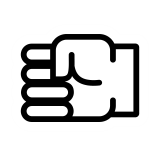The Founder’s Dilemma: Separating Ownership and CEO Roles
Starting a business from scratch and pouring your energy, money, and creativity into it is no easy feat. As a founder, you lead your company from the beginning, often with only a few employees, through the whirlwinds of challenges, problems, missed opportunities, and exploitation. Over the years, your company has changed and expanded its operations, but the whirlwind of challenges remains present, albeit in different forms. It’s perfectly normal for these challenges to persist in the business world.
However, there inevitably comes a moment when you, as the founder, begin to consider separating the two roles you represent: owner and CEO (Chief Executive Officer). This decision is one of the toughest you will have to make in your business journey. Statistically, founders are the best CEOs in the early stages of a company’s development. But as the business becomes more complex, they statistically no longer deliver the same level of performance as in the beginning.
In research that collected data from nearly 2,000 companies, it was concluded that founders perform at their best, on average, in the first 6 years of managing a company. Surprisingly short, isn’t it? Of course, this is just a statistical average, and the optimal time varies depending on the specific situation. But it’s during this time that you should start thinking about your successor as the CEO.
When to Consider a Professional Manager as CEO
It’s entirely normal that, at some point, you may want a professional manager to take over and run your company. This decision can be challenging because the company is your “child,” and you represent it, just as it represents you. This connection is deeply embedded in your ego, so separating yourself from the company can be painful and challenging. However, retiring from the CEO position doesn’t mean withdrawing from your work entirely. As the owner, you would now take on the role of the “board of directors,” overseeing the CEO. On the other hand, you may continue to be operationally active in areas where you have made the greatest contribution to the business, serving as active executors in a key segment of the business and/or as advisors.
Perhaps you have already attempted to delegate management to someone to some extent but were disappointed with the results. While it may be tempting to find a replacement for yourself in the CEO position who thinks and acts exactly like you, this approach is often insufficient. It’s important to recognize that such a person is almost impossible to find, and even if you do find them, there is a minimal chance that you can transfer your knowledge and wisdom “from one generation to another.”
The Transition to a Professional Manager: Three Critical Conditions
Hiring a professional manager is not enough to simply believe that you have found a capable person who will transform your business into a “magnificent” organizational model and continue exactly as it has been so far. No matter what they promise, in 99% of cases, it won’t happen, and you will be disappointed.
To ensure a successful transition, you need to meet three critical conditions:
- Building an Organizational Infrastructure: Every company is somehow organized, but it’s essential to have a somewhat established organizational system. Whether your organization is more or less organized, it’s crucial to have a simple way to “record” it and document it in an appropriate form that will be understandable to the future professional manager. This condition is easily achievable by building the so-called organizational infrastructure of your business, which serves as the anchor point of your organization.
- Translating Best Practices into the Organizational Infrastructure: To ensure continued success, you need to translate your best business and management experiences into your organizational infrastructure. This ensures that employees and managers will use your best practices and continue to achieve desired results. They will have an organizational infrastructure that allows them to improve processes and successfully adapt them to future conditions. This also applies to the new professional manager.
- Overcoming Personal Working Style Specificities: As a founder, you have developed specific working styles that may be deeply ingrained in your approach to running the business. However, it’s important to recognize extreme specificities in your personal working style that are impossible or unprofitable to transfer to others. Once identified, you need to eliminate or replace them with new processes and procedures that can effectively compensate for them. This presents significant challenges, as it requires self-reflection and a willingness to let go of certain aspects of your working style.
By meeting these three conditions, it becomes much easier and more certain that a new professional manager, or someone from your employees or family, can take over the management of the company. However, it’s important to note that thorough preparation is required for a successful transition.
Integrating Change into the Organizational Infrastructure
Integrating change into the organizational infrastructure is a crucial step in the transition process. If extreme specificities in your personal working style cannot be removed simply, they should be carefully analyzed and translated into new processes and procedures within your organizational platform. These new processes and procedures should be easily executable and well integrated with all other aspects of your organization that must inevitably be adapted to some extent due to this change.
Using Managerial Tools in a Successful Transition
Successfully building organizational infrastructure and transitioning to a professional manager can be facilitated by using management tools such as [Workanizers]. These tools can significantly facilitate and accelerate the fulfillment of the three critical conditions mentioned earlier. Additionally, they can promote effective organization and management within your company. By utilizing management tools, you can enhance productivity, streamline processes, and ensure a smooth transition to a new management structure.
[Workanizers] tools can inspire and motivate business people while promoting success in transitions. Furthermore, in case the new manager does not adapt well to the new role, the [Workanizers] organizational mechanism is robust enough to continue functioning independently and delivering results until a suitable successor to the founder-owner is identified for managing the company.
In conclusion, transitioning from managing your company is a significant decision that requires careful consideration and preparation. By recognizing the need for a professional manager, building a solid organizational infrastructure, translating best practices, overcoming personal working style specificities, and utilizing management tools like [Workanizers], you can ensure a successful transition and secure the future growth and success of your business.
Benefits
The benefits of transferring management can vary depending on the specific circumstances and individuals involved.
- Time and Focus: Transferring management allows the owner to free up their time and focus on other aspects of their life or business. They can delegate day-to-day responsibilities to the new manager, giving them more time to strategize, explore new opportunities, or simply enjoy personal pursuits.
- Expertise and Skills: If the new manager possesses specific expertise or skills that the owner lacks, transferring management can bring fresh perspectives and capabilities to the business. This can lead to improved decision-making, operational efficiency, and overall performance.
- Work-Life Balance: By transferring management, the owner can achieve a better work-life balance. They can reduce stress and workload, allowing them to spend more time with family, pursue hobbies, or take vacations without constantly worrying about the business’s day-to-day operations.
- Growth and Expansion: A new manager may bring a different vision or approach to the business, which can lead to growth and expansion opportunities. They may have fresh ideas, industry connections, or the ability to tap into new markets, enabling the business to reach its full potential.
- Succession Planning: Transferring management can be part of a long-term succession plan. It allows the owner to groom a successor, ensuring a smooth transition when they eventually decide to retire or step away from the business. This can provide peace of mind and continuity for both the owner and the business.
FAQ
1. When should I consider transferring the management of my company to a professional manager?
- It is recommended to consider this transition when your company becomes more complex, and you feel that your performance as the CEO is no longer at its best. On average, founders perform at their best in the first 6 years of managing a company.
2. How do I separate my role as the owner and CEO of the company?
- Retiring from the CEO position doesn’t mean withdrawing from your work entirely. As the owner, you can take on the role of the “board of directors,” overseeing the CEO. You may also continue to be operationally active in areas where you have made the greatest contribution to the business, serving as active executors in a key segment of the business and/or as advisors.
3. What are the critical conditions for a successful transition to a professional manager?
- The three critical conditions are: building an organizational infrastructure, translating best practices into the organizational infrastructure, and overcoming personal working style specificities. These conditions ensure that the new manager can effectively take over and continue the success of the company.
4. How can I integrate change into the organizational infrastructure?
- Extreme specificities in your personal working style should be carefully analyzed and translated into new processes and procedures within your organizational platform. These new processes and procedures should be easily executable and well integrated with all other aspects of your organization that must be adapted due to this change.
5. How can management tools like [Workanizers] help in the transition process?
- Management tools like [Workanizers] can facilitate and accelerate the fulfillment of the critical conditions mentioned earlier. They can enhance productivity, streamline processes, and ensure a smooth transition to a new management structure. These tools can also continue functioning independently if the new manager does not adapt well to the role until a suitable successor is identified.
6. What should I consider before transferring the management of my company?
- It is important to consider and prepare for the transition carefully. Recognize the need for a professional manager, build a solid organizational infrastructure, translate best practices, overcome personal working style specificities, and utilize management tools to ensure a successful transition and secure the future growth and success of your business.

